Submitted by Berrin Chatzi Chousein
"I want to use my knowledge and experience for general public" says Shigeru Ban
Turkey Architecture News - May 15, 2023 - 13:24 4044 views
Pritzker Architecture Prize-winning architect Shigeru Ban, explained his desire to use his knowledge and experience not only for the privileged people, but also for the general public in his lecture at METU Faculty of Architecture in Ankara, Türkiye.
Speaking in his lecture hosted by METU Urgent Design Studio in Ankara, the Pritzker Architecture Prize-winning architect said that "I was disappointed in my profession as an architect".
According to the architect, architecture has lost its way between power and money, rather than being useful to the general public.
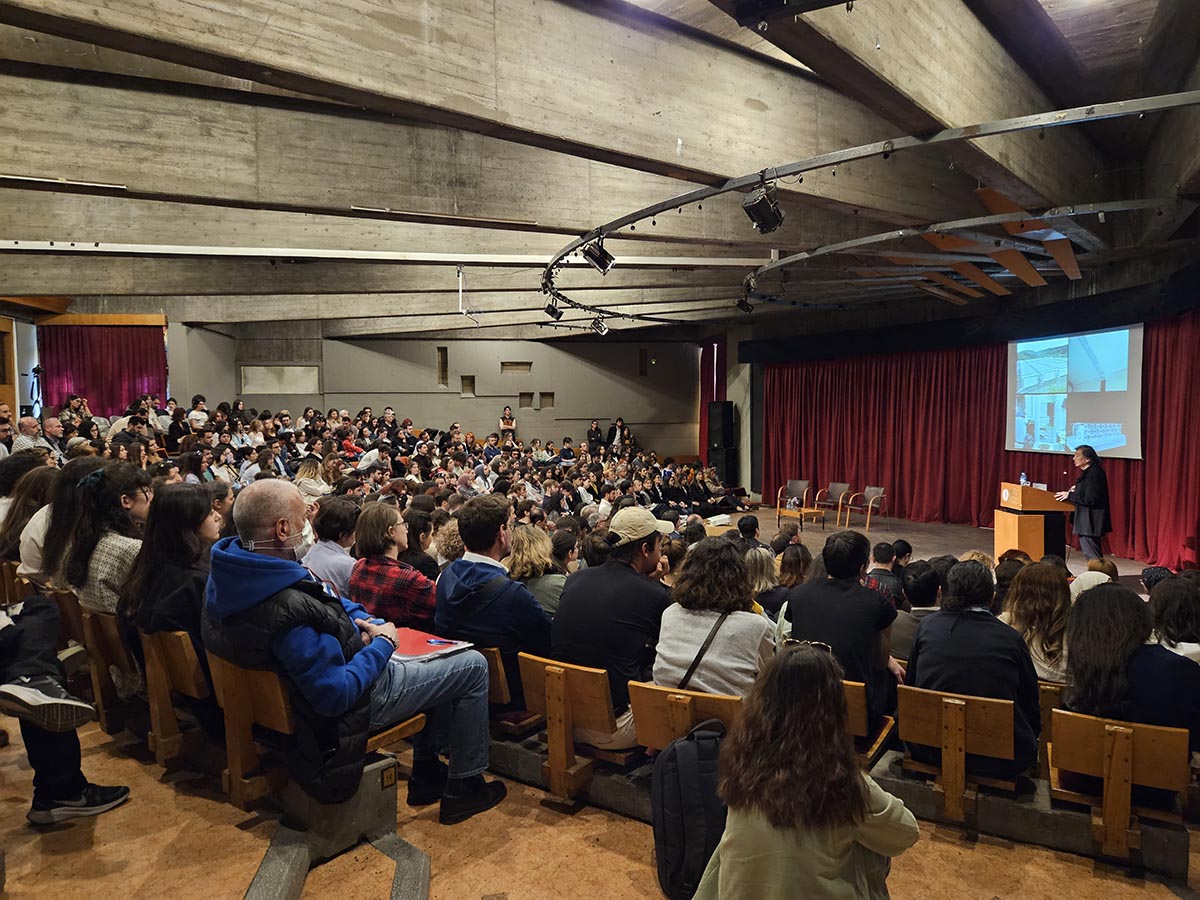
Shigeru Ban in his lecture at METU Faculty of Architecture. Image © Alp Yılmaz, courtesy of METU Urgent Design Studio
"Power and money are invisible"
He said that "maybe, we're working for the privileged people who has power and money, because power and money are invisible."
"The clients hire us to make monuments to show off their power to the public," he said.
"I'm not saying that I'm not interested in making a monument, but I thought, I want to use my knowledge and experience not only for the privileged people, but also for the general public - even for the people who lost their homes by natural disasters," Ban added.
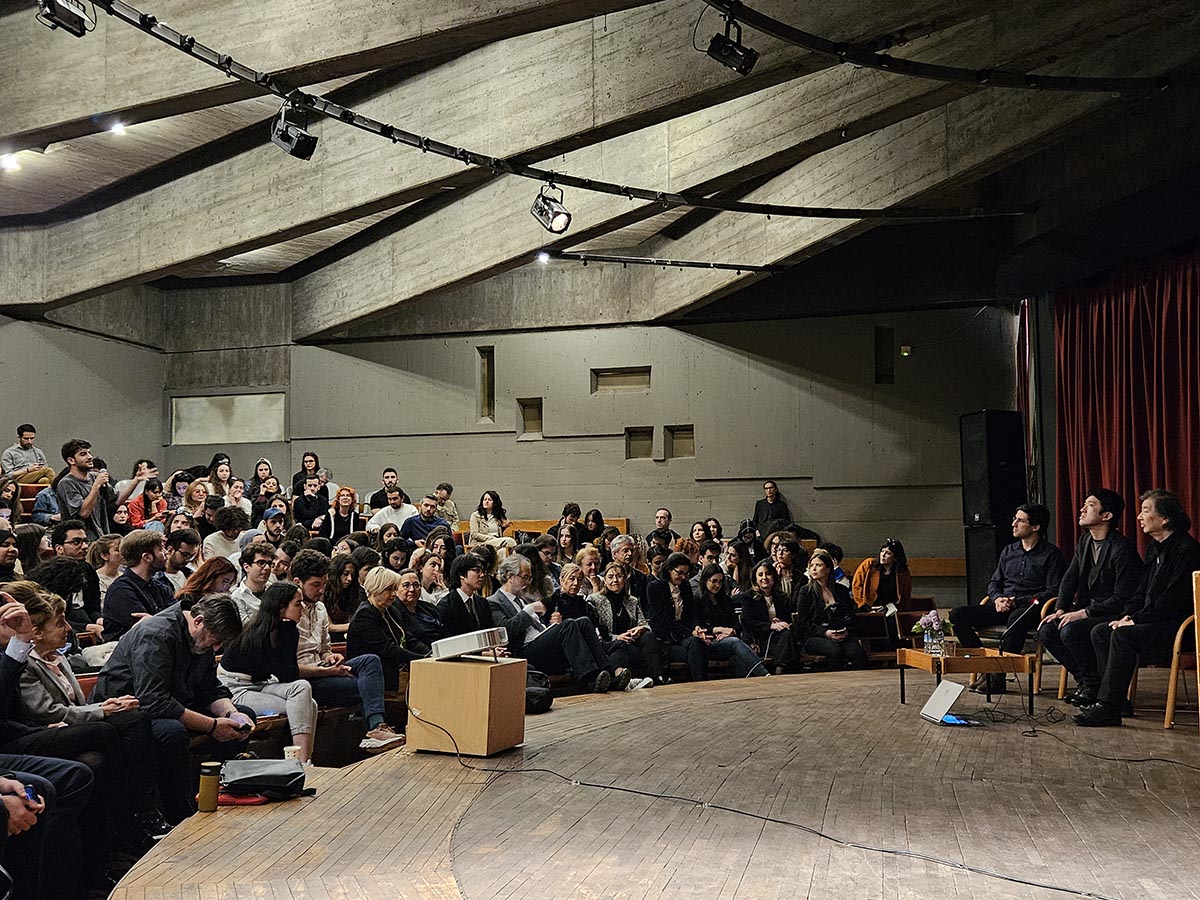
Shigeru Ban talk at METU Faculty of Architecture. Image © Alp Yılmaz, courtesy of METU Urgent Design Studio
Ban's lecture, titled Balancing Architectural Works and Social Contributions, consisted of various examples of his environmental-friendly projects - whether they are permanent or temporary - with his experiences across the world, starting from how the inhabitants use his buildings and how they were built based on its local conditions.
Shigeru Ban talk at METU Faculty of Architecture. Image © Turgut Polatel, courtesy of METU Urgent Design Studio
"Especially, I recognize that earthquakes never kill people, but the collapse of buildings kill people," Ban continued.
"But our responsibility, as architects, after big disasters, we have to build the city and we have to get more progress," the architect explained.
Speaking to World Architecture Community in a video interview, Ban also talked about the details and materials required for the Paper Log House to have a long-life span and to remain durable in an earthquake zone.
"This should be durable enough to be used as a permanent house," Ban told WAC.
Stating that it was very easy to build the Paper Log House prototype in the earthquake area, the architect underlined that he always used standard materials that could be accessed anytime, anywhere.
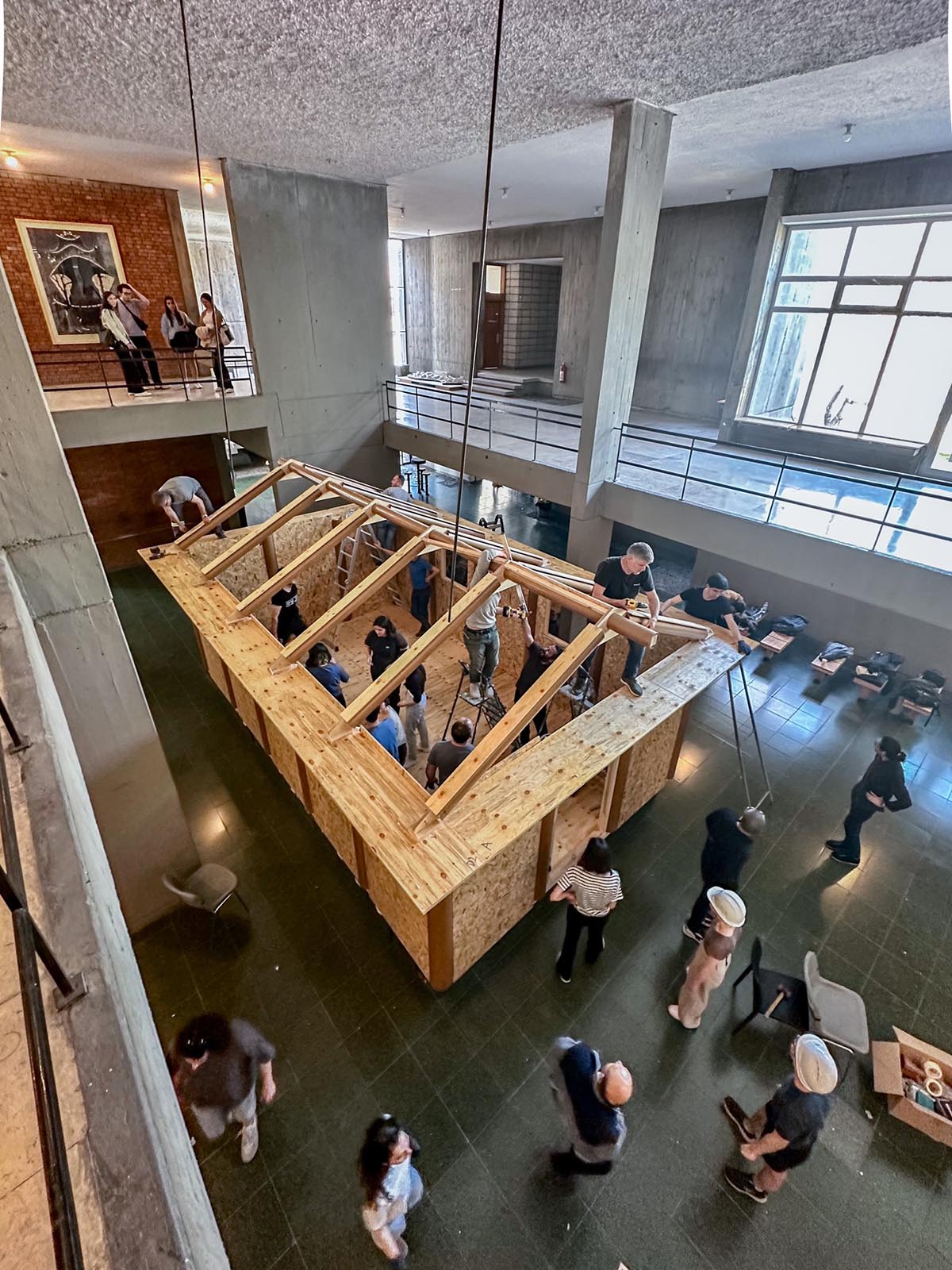
Paper Log House prototype at METU Faculty of Architecture. Image © Aslıhan Günhan, courtesy of METU Urgent Design Studio
"However, the standard sizes of the private units were different in here and Japan, that was something we needed to adjust," the architect added.
According to Ban, in later stages, it's not yet clear how many Paper Log Houses will currently be built for the earthquake zone.
The architect emphasized that how many Paper log House temporary houses should be built can be decided according to needs, after visiting the earthquake area.

Paper Log House prototype at METU Faculty of Architecture. Image © Beril Kapusuz, courtesy of METU Urgent Design Studio
A spokesperson from the METU Urgent Design Studio told WAC that that before the Paper Log Houses can be built in the earthquake zone, it is necessary to determine the exact location of where the units will be built and to obtain the necessary local permits.
Besides his lecture, Ban presented his Paper Log House, a prototype of temporary housing unit designed for the victims of the Turkey-Syria earthquake.
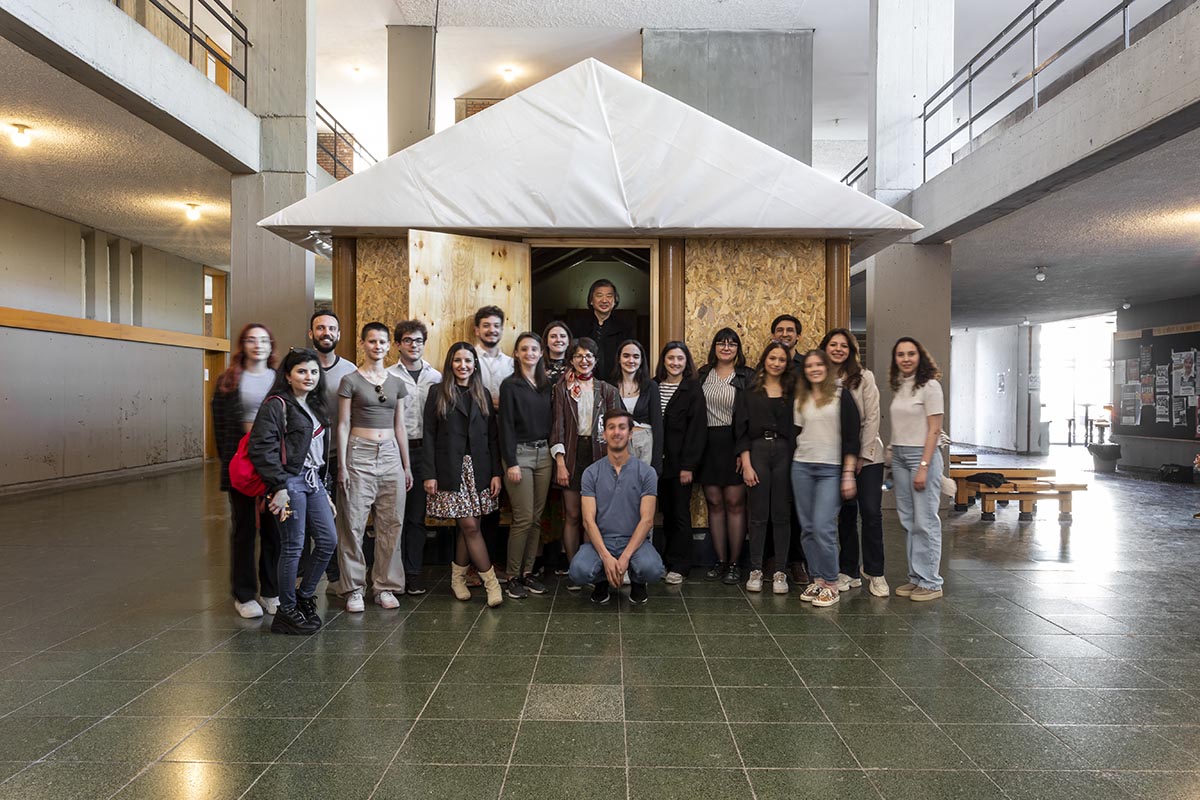
Paper Log House prototype at METU Faculty of Architecture. Image © Beril Kapusuz, courtesy of METU Urgent Design Studio
The Paper Log House prototype, installed at the center of the METU Department of Architecture, was built with the help of volunteering students and faculty members.
After being dismantled by students, the prototype, led by Shigeru Ban, was installed in Hatay, one of the earthquake provinces in Türkiye. The Paper Log House prototype will be used for an educational unit for children.

Paper Log House prototype at METU Faculty of Architecture. Image © Beril Kapusuz, courtesy of METU Urgent Design Studio
Socially minded architect Shigeru Ban, known for his humanitarian projects, visited Türkiye in March to install his Paper Partition Shelters (PPS) for the victims of the Turkey-Syria earthquake in Mersin and Hatay.
Ban's Paper Partition Shelters, entirely built from paper tubes and fabric, were installed in the evacuation centres; one of them in Yenisehir Indoor Sports Hall in Mersin, and the other within temporary tents as a field hospital in Hatay.
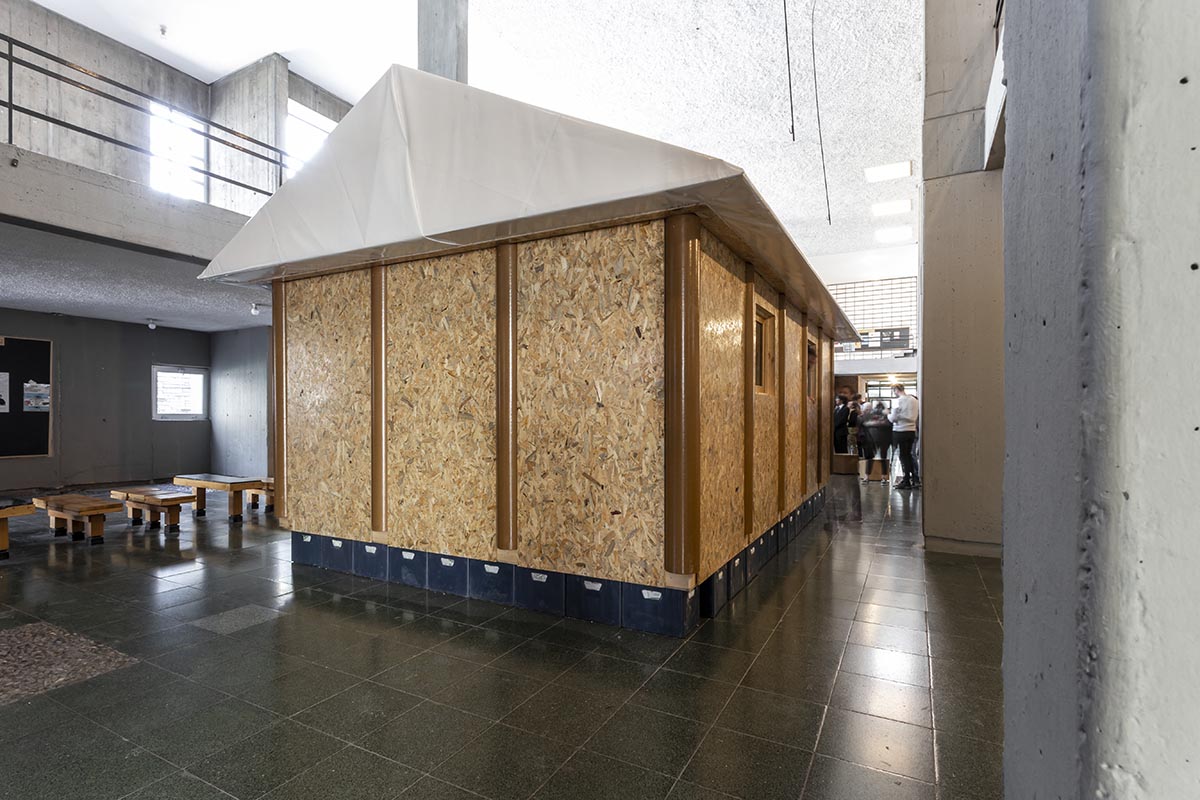
Paper Log House prototype at METU Faculty of Architecture. Image © Beril Kapusuz, courtesy of METU Urgent Design Studio
On the other hand, Paper Log House, designed by Shigeru Ban Architects and his initiative Voluntary Architects’ Network, is a special prototype developed for the victims of the recent earthquake. He also worked on the prototype at Shibaura Institute of Technology in Tokyo, Japan.
Paper Log House is made of entirely eco-friendly and recyclable materials, particularly paper, cardboard tubes and chipboards with more isolation, as well as disused crates to raise the structure from ground as a foundation.
The prototype unit is large enough to accommodate a family and features a hipped-gable roof. The house has large circular holes on the roof to let the light in slightly.
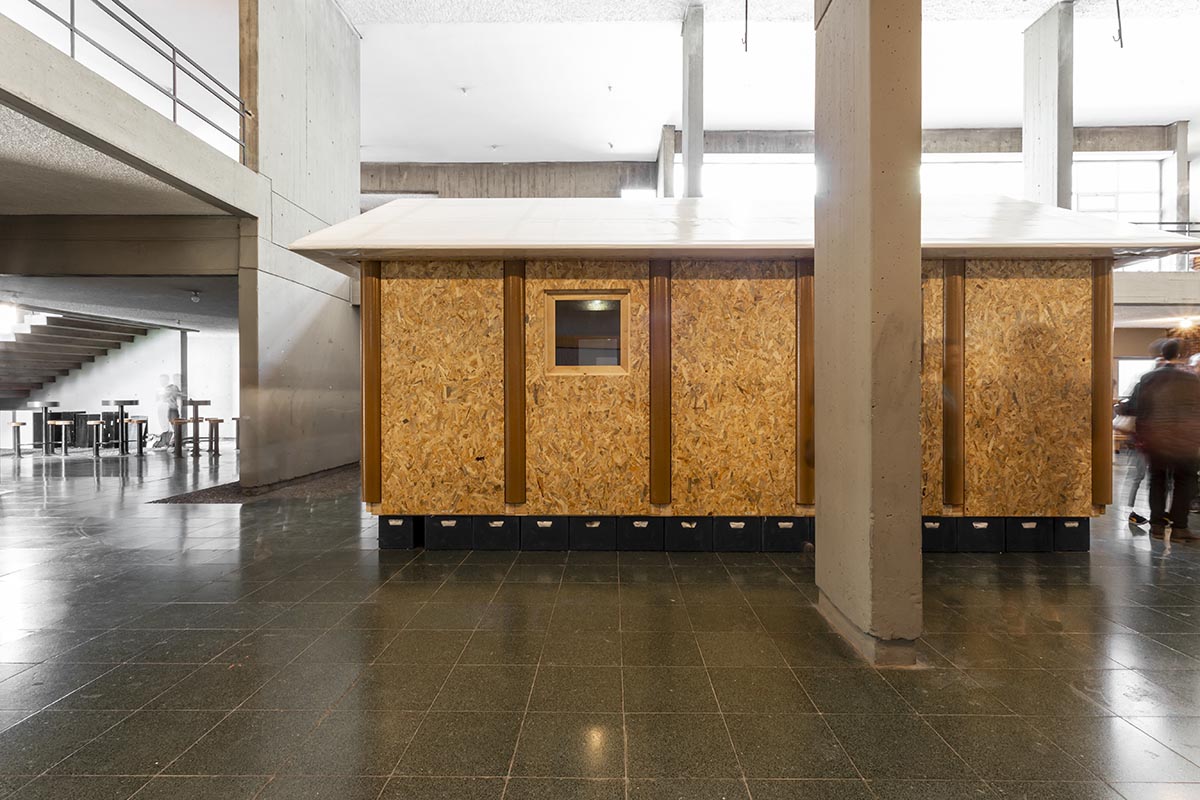
Paper Log House prototype at METU Faculty of Architecture. Image © Beril Kapusuz, courtesy of METU Urgent Design Studio
What is permanent? And, what is temporary?
Ban also discussed the concepts of "temporary" and "permanent" in his presentation. According to Ban, "a structure made of a paper can also be permanent", he said.
"If people like to live there, the building can be permanent," he continued.
Most of Shigeru Ban's temporary buildings have become permanent in the world, like his Paper Church, it was built after the 1995 earthquake in Kobe, Japan. The church was built from paper tubes in which they form a continuous wall.
After the church stayed in Kobe for ten years, it was disassembled in June 2005 to move to Taiwan and the building is still used as a community center.
This is not the first Paper Log House designed by the architect in Türkiye. Following the 1999 earthquake in Türkiye, in 2000, Ban designed Paper Log Houses in various locations of the country.
He adapted his design from the shelters he built in Kobe, Japan in dimensions that could accommodate a family by using Turkish plywood standards.

Paper Log House prototype at METU Faculty of Architecture. Image © Beril Kapusuz, courtesy of METU Urgent Design Studio
Paper Log Houses, designed by Ban in 2000, were 3 meters by 6 meters in size.
The architect used shredded wastepaper into tubes along all the walls and fiberglass on the ceiling. He also used cardboard and plastic sheets for more insulation according to the residents' needs.
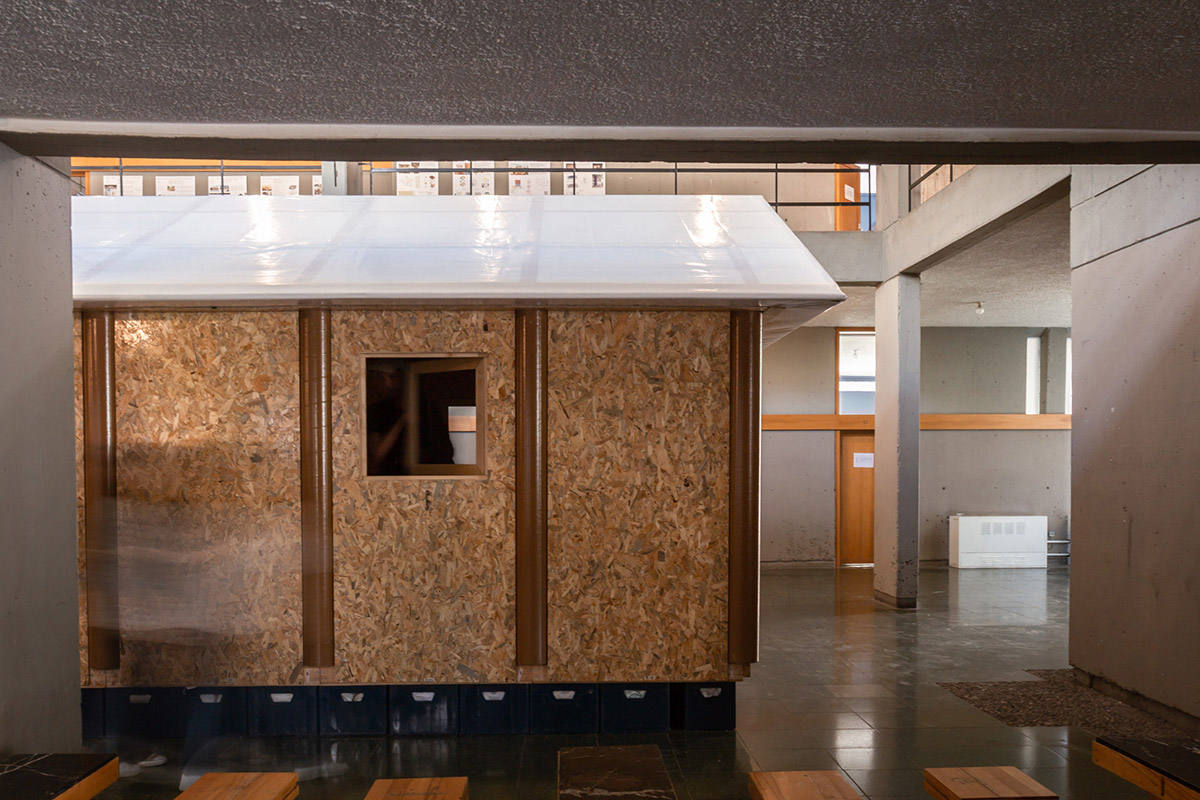
Paper Log House prototype at METU Faculty of Architecture. Image © Aslıhan Günhan, courtesy of METU Urgent Design Studio
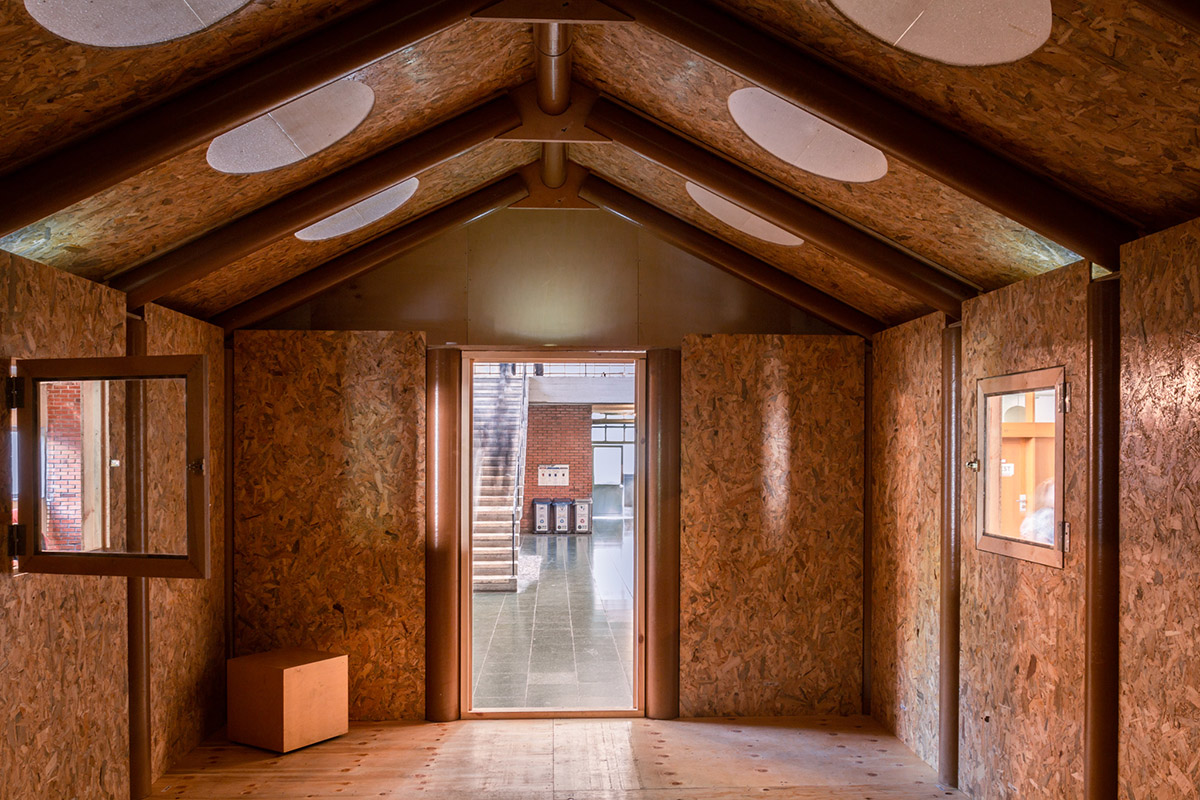
Paper Log House prototype at METU Faculty of Architecture. Image © Aslıhan Günhan, courtesy of METU Urgent Design Studio
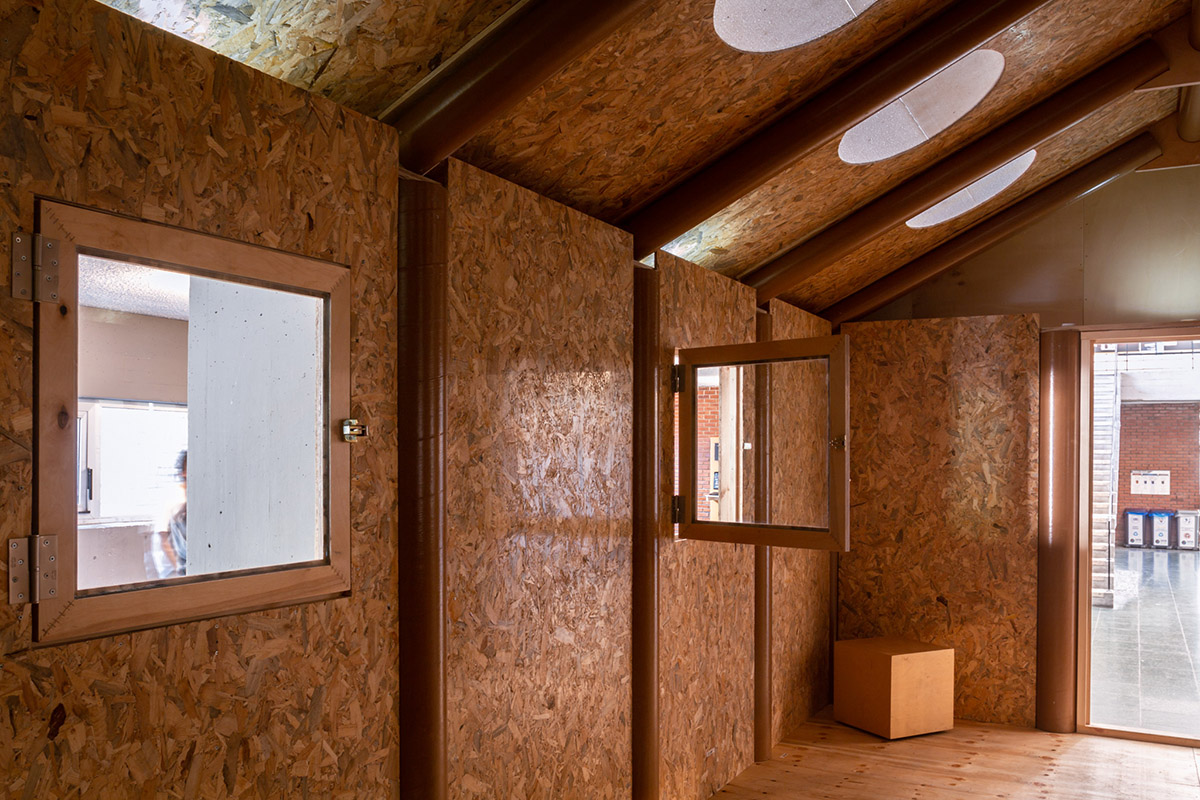
Paper Log House prototype at METU Faculty of Architecture. Image © Aslıhan Günhan, courtesy of METU Urgent Design Studio

Paper Log House prototype at METU Faculty of Architecture. Image © Aslıhan Günhan, courtesy of METU Urgent Design Studio
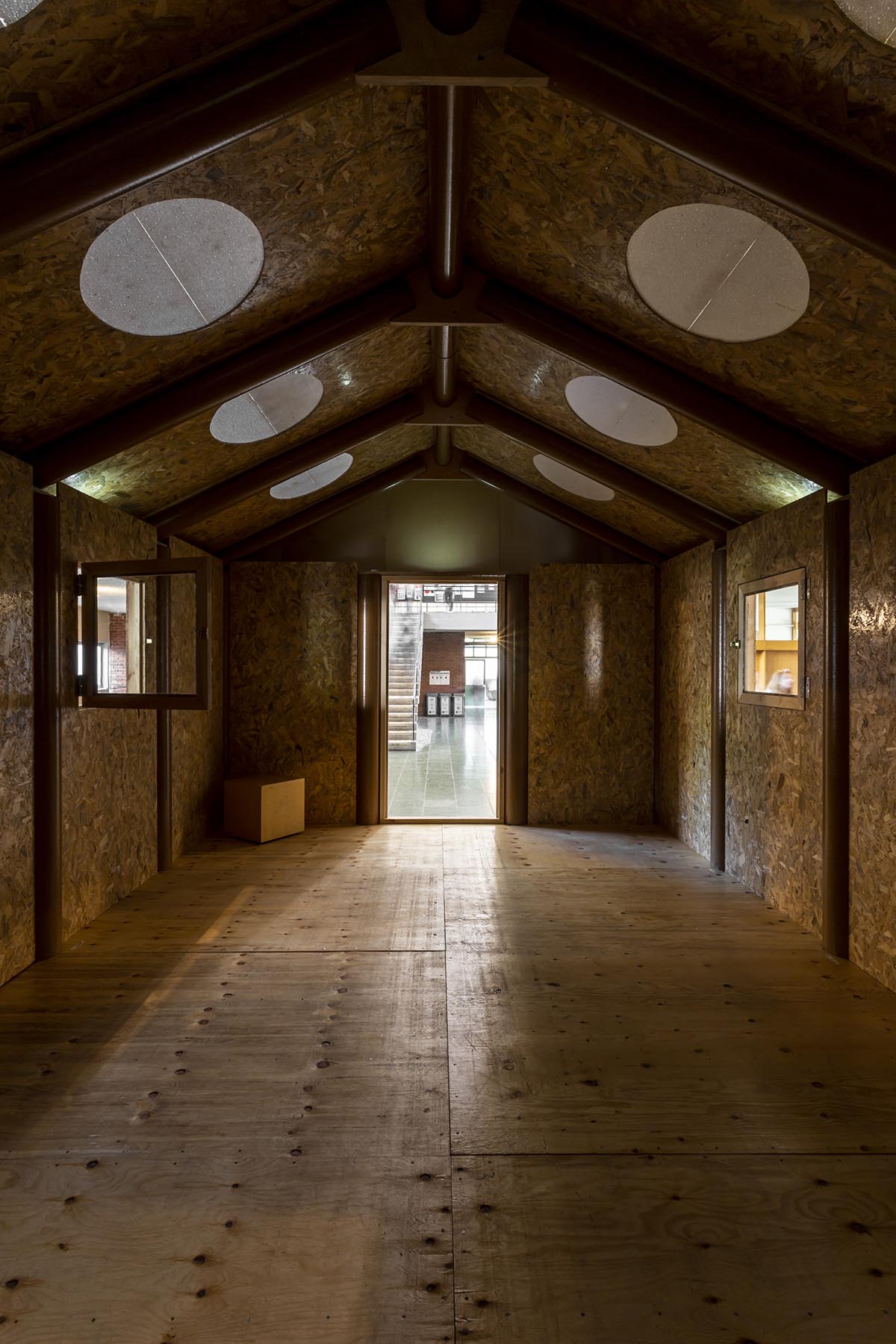
Paper Log House prototype at METU Faculty of Architecture. Image © Beril Kapusuz, courtesy of METU Urgent Design Studio

Paper Log House prototype at METU Faculty of Architecture. Image © Beril Kapusuz, courtesy of METU Urgent Design Studio
Paper Log House prototype in Hatay. Image © Ayça Nilüfer Çalıkuşu, courtesy of METU Urgent Design Studio
Paper Log House prototype in Hatay. Image © Kenan Kantarcı, courtesy of METU Urgent Design Studio
Paper Log House prototype in Hatay. Image © Kenan Kantarcı, courtesy of METU Urgent Design Studio
Paper Log House prototype in Hatay. Image © Kenan Kantarcı, courtesy of METU Urgent Design Studio
Paper Log House prototype in Hatay. Image © Kenan Kantarcı, courtesy of METU Urgent Design Studio
Paper Log House prototype in Hatay. Image © Kenan Kantarcı, courtesy of METU Urgent Design Studio

Paper Log House prototype in Hatay. Image © Ömer Faruk Ağırsoy, courtesy of METU Urgent Design Studio
Shigeru Ban and VAN installed Paper Partition Shelters for Ukrainian refugees in Poland last year. In 2017, Shigeru Ban, in collaboration with UN-Habitat, signed an agreement to design 20,000 new homes for refugees in the Kalobeyei Refugee Settlement in Kenya.
Ban designed temporary homes for the victims of devastating floods occurred in 2018 in Southern Japan. The architect developed the first Paper Partition System in the 2004 Niigata Chuetsu Earthquake, known as PPS1.
Top image: Turgut Polatel, courtesy of METU Urgent Design Studio.
Paper Log House Shigeru Ban Turkey-Syria earthquake Voluntary Architects’ Network
